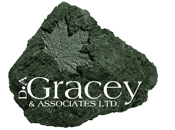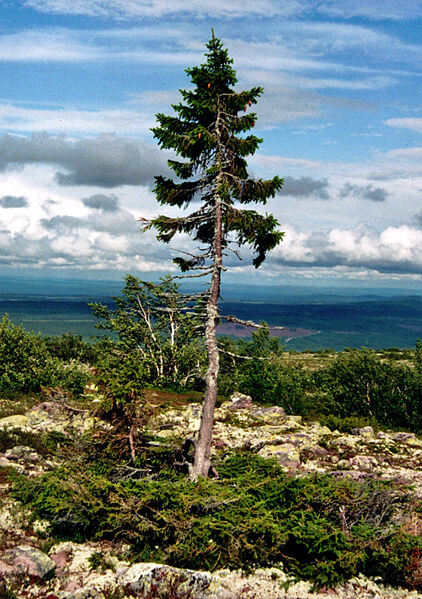Trees have been used as ornamental plants as early as the Egyptians. They wrote about trees being transplanted with a ball of soil around the roots. Throughout the years and around the world, many trees were introduced to new places by trade and travel. Today these magnificent trees provide great sources of information and beauty. The natural life span of most trees is greater and longer than that of humans. Tree planting is an investment and requires some brute strength and knowledge to plant properly. Do your research first and look around your neighborhood for healthy suitable trees. Ask the many experts available for proper tree advice. Sources include knowledgeable landscaping companies as well as your local nursery. The Benefits of Trees · Increase property value · Can create the impression of a well-established place in a new housing development · Creates shade to help reduce cooling costs in the summer · Provides a windbreak to help reduce heating costs reduced in the winter · Enhances views and adds character to a landscape · Softens the look of hard surface areas like walkways, patios and decks The Importance of Planting the Right Tree in the Right Place The first thing to consider is the function of the tree. There are a variety of functions that trees can provide in addition to just being beautiful to look at. Here are just a few. · Define spaces · Mark boundaries · Provide privacy especially in urban properties · Blocking unsightly views · Provide links between different areas · Shade · Windbreak · Focal Point · Wildlife habitat · Living fence There are many different tree forms to choose from once your function is determined. Tree shapes vary and selecting the proper shape will help to achieve the selected purpose of the tree. Creating Shade – round/oval trees. Examples: Greenspire Linden, Magnolia, Ivory Silk Japanese Lilac, Oak, Maples. Focal Points – weeping shape. Examples: Weeping Purple Beech, WeepingBirch, Camperdown Elm, Cutleaf Weeping Japanese Maple. Screening/Living Fences – columnar/pyramidal form. Examples: Dawyck Beech, Columnar Maple, Chanticleer Pear, Pyramidal Hornbeam. After you have determined the function of your proposed new trees, then it is time to determine to conditions of the site. It is very important to select species of trees that will survive in their new conditions. Conditions to observe: · Sun/Shade · Wet/Dry · Zone Hardiness · Wind Conditions · Size of Lot – It is very important to choose a tree that will not out grow its space and require severe pruning as it matures! Health Care for Your New Trees Once you have determined your tree selection and it is properly planted, it will be important to know about the care to be taken your tree to get off to a healthy start. Watering Both deciduous and evergreen trees require adequate watering during the first two years after being planted for healthy root development. Check the tree every 2-3 days, the soil beneath the mulch should feel slightly moist. If it is dry, it probably needs watering. Keep in mind that overwatering can reduce soil air space, lowering oxygen availability, and that can be just as bad as drought for the tree. A good method for watering is by hand with a hose positioned at the base of the tree. Keep the water on very low flow for 15 -20 minutes. This will provide a deep root watering for the tree. In the fall, evergreen trees such as Yews, Boxwood and Cedars, benefit from this method of watering because these trees store the water for the cold windy winter months. Mulch A properly planted tree will have a tree ring around the base of the tree. Annually check the ring has 3-4 inches of mulch around the tree. Ensure the mulch is kept away from the tree trunk. The mulch will help to retain moisture and deter weed growth. Winter Protection During the first two years of a newly planted tree, some varieties benefit from burlap wrapping for the winter months. The burlap helps the tree retain moisture especially if the tree is located in a windy location. Japanese Maples and cedars are two examples. Tree Stakes Tree stakes must be removed after 2 years. Stakes left on trees too long, will be a health hazard, as the bark will not develop naturally. Newly planted trees experience Transplant Shock and are highly vulnerable to stress. Proper planting and regular early care will encourage rapid root development and the success of your newly planted tree. Popular Trees for Small Urban Properties Japanese Maples Downy Serviceberry Pagoda Dogwood Kousa Dogwood Chanticleer Pear Eastern Redbud Canadian Hemlock Our favorites for large country properties: Red Oak Colorado Blue Spruce White Pine Sugar Maple Hornbeam Beech Let’s continue to plant trees to make this valuable contribution to life!
Recent Posts
Archives
- July 2017
- March 2017
- February 2017
- January 2017
- June 2016
- May 2016
- April 2016
- March 2016
- February 2016
- January 2016
- September 2015
- August 2015
- July 2015
- May 2015
- April 2015
- March 2015
- February 2015
- January 2015
- October 2014
- September 2014
- August 2014
- July 2014
- May 2014
- April 2014
- March 2014
- February 2014
- January 2014
- December 2013
- November 2013
- September 2013
- May 2013
- April 2013
- March 2013
- February 2013
- January 2013
- December 2012
- November 2012
- October 2012
- September 2012
- August 2012
- June 2012
- May 2012
- April 2012
- March 2012
- February 2012
- January 2012
- December 2011
- November 2011
- September 2011
- August 2011
- June 2011
- May 2011
- April 2011
- March 2011
- February 2011
- January 2011

